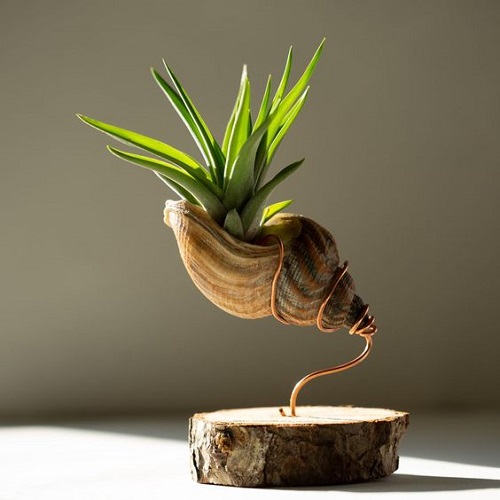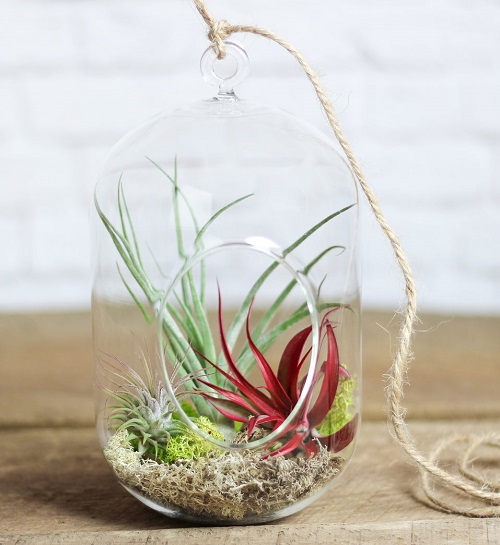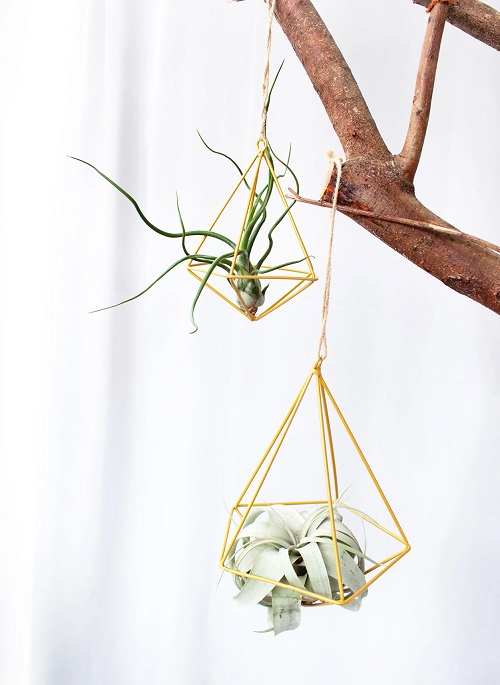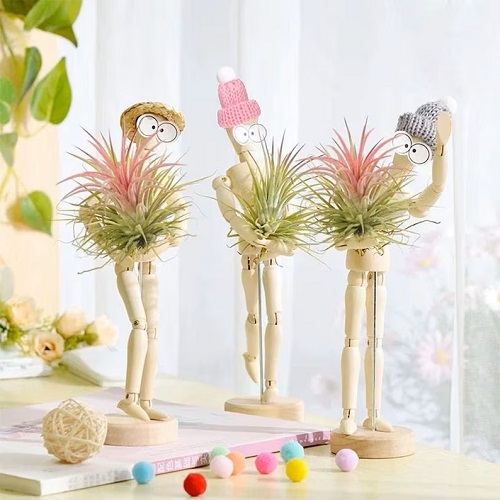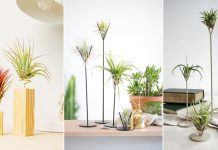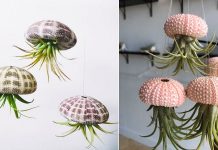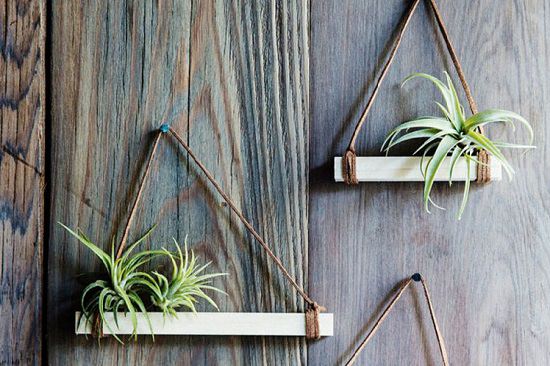Find What Does a Healthy Air Plant Look Like? This guide will help you analyze the appearance of an air plant having no issues.
Discovering the visual cues of a thriving air plant is a gateway to fostering verdant vitality in your indoor spaces. This guide unveils insights into What Does a Healthy Air Plant Look Like? and concludes with the significance of nurturing these captivating plants.
Learn Everything About Air Plant Diseases here
What Does a Healthy Air Plant Look Like?
1. Vibrant Coloration
A healthy air plant will display vibrant and rich coloration. The plant leaves can range from shades of green to silvery-gray. The color should be consistent across the plant without noticeable discoloration, browning, or yellowing. The leaves might have a slight curvature and should feel firm to the touch.
2. Leaf Condition
Inspect the leaves of your air plant. They should be turgid and plump. Avoid plants with wrinkled or shriveled leaves, as this can indicate dehydration or poor health. A healthy air plant will have leaves that appear open and slightly spread apart, allowing them to capture nutrients and moisture effectively.
3. Roots
Air plants usually have minimal roots that primarily anchor themselves to surfaces. Healthy roots are generally light gray or silver, indicating actively absorbing water and nutrients. However, the absence of roots doesn’t necessarily indicate an unhealthy plant, as air plants can thrive without extensive root systems.
4. Flowering
Air plants have a unique blooming process. When a plant is about to bloom, it will produce vibrant and colorful flowers. The appearance of flowers signifies a healthy and mature air plant. The blossoms can vary in color, depending on the species, and they should be relatively large and well-formed.
5. Absence of Pests
A crucial aspect of a healthy air plant is the absence of pests. Inspect your plant regularly for signs of infestation, such as small insects, webs, or discoloration caused by pests. Keeping your air plant clean and isolated from other infested plants will contribute to its well-being.
6. Check for Sunburn
A healthy air plant exhibits no signs of sunburn. Its leaves remain vibrant in color, without any brown or yellow patches. Sunburn can occur when the plant is exposed to excessive direct sunlight, so ensuring its shade is crucial.
7. Ensure the Leaves are Not Wilted
The leaves of a healthy air plant are upright and firm, not drooping or wilted. Wilting can signal dehydration or improper care. Adequate watering and maintaining the right humidity levels prevent this issue.
8. Air Plant Absorbing Water
Observing a healthy air plant as it absorbs water is a positive indicator. When immersed in water, it will absorb moisture, causing its leaves to straighten and its overall appearance more vibrant.
9. Check for Leaf Fuzz
Examine the leaves for a fine, silvery fuzz called trichomes that is natural in air plants. It helps them absorb water from the air. A healthy plant displays these trichomes, showcasing its adaptability to its environment.
Factors Affecting the Health of Air Plants
Proper Care
While the appearance of the air plant is a key indicator of its health, providing proper care is equally essential. Healthy air plants thrive in environments with bright, indirect light. They should be misted with water or soaked regularly to ensure they receive adequate hydration. Letting the plant dry completely after watering is important to prevent rot.
Environmental Conditions
A healthy air plant responds positively to its environment. The plant will grow and maintain its vibrant appearance if it gets the right amount of light, water, and humidity. Changes in color, leaf texture, or overall size can indicate the plant is not receiving the optimal conditions it requires.
Read What Is an Air Plant Called here
Tips to Take Care of Air Plants
- Place air plants in bright, indirect light. They thrive near windowsills or under artificial grow lights. Ensure they receive enough light for photosynthesis.
- Submerge air plants in room temperature water for about 20-30 minutes every 1-2 weeks. Allow them to dry upside-down to prevent water from pooling in the leaves.
- Maintain moderate humidity levels, around 40-60%, to mimic their natural environment. Misting or using a humidity tray aids in humidity regulation.
- Proper air circulation prevents stagnant moisture, which can lead to rot. Ensure adequate ventilation in the room.
- Use a diluted, balanced, water-soluble fertilizer monthly during the spring.
Mastering recognizing a thriving air plant through its vibrant hue, turgid leaves, active roots, pup proliferation, and blossoming is a rewarding skill. Implementing detailed care practices ensures a flourishing air plant. Cultivating these remarkable plants adds charm to your surroundings and offers a rewarding journey of nurturing nature’s wonders.
Discover Tillandsia Zecheri Information and Growing here
FAQs- What Does a Healthy Air Plant Look Like?
Q: What does a healthy air plant look like?
A healthy air plant generally displays vibrant and lively characteristics. Its leaves should appear well-hydrated and turgid, displaying a rich green color. The plant should be firmly attached to its base, and its leaves should exhibit a natural curve and shape. A lack of browning, spotting, or wilting is indicative of a healthy air plant.
Q: How often should I water my air plant to keep it healthy?
Air plants have unique water requirements. A general guideline is to soak them in water for about 20-30 minutes every one to two weeks. It’s crucial not to overwater as this can lead to root rot. Adjust the frequency based on your local humidity and climate.
Q: Are there any signs that indicate my air plant is not healthy?
Yes, there are several signs of an unhealthy air plant. These include overly dry and shriveled leaves, yellowing or browning of the plant, a lack of growth or new leaves, and a loose or detached appearance from its base.
Q: What should I do if my air plant’s leaves are turning brown at the tips?
Brown tips on air plant leaves can indicate various issues such as underwatering, over-fertilization, or too much direct sunlight. Trim the brown tips with clean scissors and adjust your care routine by ensuring adequate watering and providing appropriate lighting conditions.

